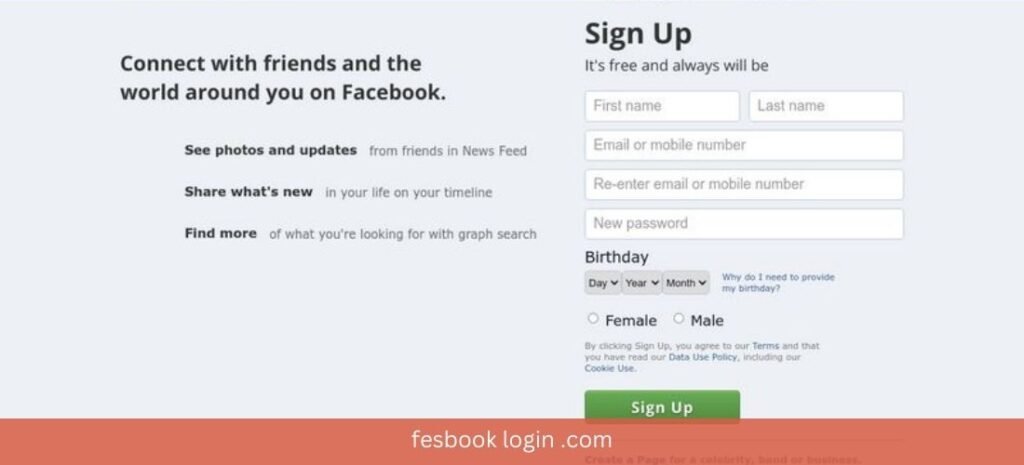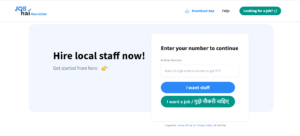
Introduction to Facebook Login
Facebook, the leading social media platform with over 2.8 billion monthly active users, offers a robust login system that allows users to access their accounts seamlessly. The Facebook login process is crucial for users to connect with friends, share updates, and engage with content. This guide will explore the mechanics of Facebook login, its features, security measures, and common troubleshooting steps.
1. Understanding Facebook Login

fesbook login .com is the gateway for users to access their fesbook login .com accounts. Users can log in through various devices, including computers, smartphones, and tablets, by entering their registered email address or phone number and password. The login page is typically accessible through the URL facebook.com or the mobile app.
1.1 The Login Page
The login page consists of two main fields: one for the email or phone number and another for the password. Additionally, there are options for users to recover their accounts, create new accounts, or access fesbook login .com business tools. The page is designed to be user-friendly, ensuring that even those with limited technical skills can navigate it easily.
1.2 Account Recovery
For users who forget their passwords, Facebook provides a straightforward account recovery process. By clicking the “Forgotten password?” link, users are guided through steps to reset their passwords via email or SMS verification. This feature emphasizes the importance of keeping contact information up-to-date for account recovery.
Read Also : HRMS Odisha Login: A Complete Guide for State Employees
2. Features of Facebook Login
2.1 Multi-Device Access
fesbook login .com system supports multiple devices, allowing users to log in from their smartphones, tablets, and desktops. The platform also remembers users on devices, enabling them to access their accounts quickly without needing to enter their credentials each time.
2.2 Two-Factor Authentication (2FA)
For enhanced security, fesbook login .com offers two-factor authentication. This feature requires users to enter a code sent to their registered mobile number or email address in addition to their password. 2FA adds an extra layer of security, protecting user accounts from unauthorized access.
2.3 Third-Party Login Integration
fesbook login .com can be used to sign in to various third-party applications and websites. This feature streamlines the login process, as users can access multiple services using their Facebook credentials without creating separate accounts.
Read Also : Betway Login: Step-by-Step Guide to Accessing Your Account Securely
3. Security Measures
Given the increasing number of cyber threats, fesbook login .comhas implemented several security measures to protect user accounts.
3.1 Password Security
fesbook login .com encourages users to create strong passwords, suggesting a mix of uppercase and lowercase letters, numbers, and symbols. Additionally, the platform regularly prompts users to change their passwords if it detects unusual activity.
3.2 Login Alerts
Users can enable login alerts, which notify them via email or SMS whenever their account is accessed from a new device or location. This feature helps users monitor any unauthorized access attempts.
3.3 Recognizing Devices
fesbook login .com can recognize devices previously used for login. If a user attempts to log in from an unrecognized device, they may be prompted to verify their identity through email or SMS, adding another security layer.
4. Common Issues and Troubleshooting
Despite its robust features, users may encounter issues while logging in to their fesbook login .com accounts. Here are some common problems and their solutions.
4.1 Forgotten Password
If a user forgets their password, they can initiate the password recovery process by clicking the “Forgotten password?” link. Users should follow the prompts to reset their password via email or SMS verification.
4.2 Account Locked or Disabled
fesbook login .com may lock or disable accounts for various reasons, such as suspicious activity or violation of community standards. If a user believes their account was mistakenly locked, they can appeal through the help center.
4.3 Unable to Access Account from a New Device
When attempting to log in from a new device, users may face verification challenges. In such cases, they should ensure they have access to the email or phone number associated with their account to receive the necessary verification codes.
5. Best Practices for Secure Login
To maintain a secure fesbook login .com login experience, users should adopt the following best practices:
5.1 Use Strong Passwords
Creating a strong, unique password for the fesbook login .com account is essential. Users should avoid using easily guessable information, such as birthdays or names, and consider using a password manager to generate and store complex passwords.
5.2 Enable Two-Factor Authentication
Activating two-factor authentication adds an extra layer of security. This feature requires users to verify their identity through a second method, making unauthorized access more difficult.
5.3 Regularly Update Contact Information
Keeping contact information up-to-date ensures users can recover their accounts easily. Users should regularly check and update their email addresses and phone numbers associated with their Facebook accounts.
5.4 Be Aware of Phishing Attempts
Users should be vigilant against phishing attempts, where malicious actors attempt to trick them into providing their login credentials. Users should always verify the URL of the login page and avoid clicking on suspicious links.
6. Conclusion
The fesbook login .com login process is a vital aspect of the user experience on the platform. With its features designed for convenience and security, users can access their accounts across multiple devices, connect with friends, and engage with content seamlessly. By understanding the login process and implementing best security practices, users can enhance their online safety and enjoy a more secure experience on Facebook.
In summary, Facebook’s commitment to security, user-friendly features, and account recovery options make logging in a straightforward process. However, it remains crucial for users to take proactive steps to protect their accounts and be vigilant against potential security threats.
By following the guidelines and recommendations outlined in this guide, users can navigate the Facebook login process confidently and securely.
Frequently Asked Questions (FAQ) about fesbook login .com
1. How do I log in to my Facebook account?
- To log in, go to fesbook login .com Enter your registered email address or phone number and your password in the designated fields, then click the “Log In” button.
2. What should I do if I forget my password?
- Click on the “Forgotten password?” link on the login page. You’ll be prompted to enter your email address or phone number associated with your account. Follow the instructions sent to your email or SMS to reset your password.
3. Why is my account locked?
- Facebook may lock accounts due to suspicious activity, violations of community standards, or if someone else is trying to access your account. If you believe your account was locked by mistake, you can appeal through the help center.
4. What is two-factor authentication, and how do I enable it?
- Two-factor authentication (2FA) adds an extra layer of security by requiring a second form of verification (like a code sent to your phone) when logging in. To enable it, go to Settings > Security and Login > Use two-factor authentication and follow the prompts.
5. Can I stay logged in on my device?
- Yes, you can choose to stay logged in on your device. Just check the “Keep me logged in” option when you log in. However, it’s advisable to use this feature only on personal devices to protect your account.
6. What if I’m logging in from a new device?
- If you log in from an unrecognized device, Facebook may ask you to verify your identity through an email or SMS code. Follow the prompts to complete the verification process.
7. How can I recover my disabled Facebook account?
- If your account is disabled, visit the Facebook Help Center and follow the instructions for appealing the decision. You may need to provide identification or additional information to verify your identity.
8. What should I do if I suspect my account has been hacked?
- If you think your account has been compromised, change your password immediately and enable two-factor authentication. Review your account for any unauthorized activity and report any suspicious behavior to Facebook.
9. How do I update my email or phone number associated with my account?
- To update your contact information, go to Settings > General > Contact. Here, you can add or remove email addresses and phone numbers linked to your account.
10. Can I use Facebook to log in to other apps?
- Yes! Many third-party apps and websites allow you to log in using your Facebook account. This feature simplifies the login process but be sure to review the permissions you grant these apps.
11. What should I do if I’m receiving spam or phishing messages?
- Never click on suspicious links or provide personal information in response to unsolicited messages. Report any spam or phishing attempts to Facebook using the reporting tools available.
12. Is it safe to use my Facebook account to log into other services?
- While using Facebook login for other services can be convenient, it’s important to ensure the service is reputable. Always check the permissions you’re granting and consider using unique passwords for different services for added security.
13. What should I do if I can’t access my recovery email or phone number?
- If you can’t access your recovery email or phone number, follow the prompts on the Facebook login page to identify your account and answer security questions. You may also be able to use trusted contacts if you set that up previously.
14. How can I log out of Facebook on all devices?
- To log out of all devices, go to Settings > Security and Login. Under the “Where You’re Logged In” section, you can see all active sessions and log out from specific devices or all at once.
15. Can I change my Facebook password?
- Yes, you can change your password anytime. Go to Settings > Security and Login > Change Password and follow the prompts to enter your current password and create a new one.




